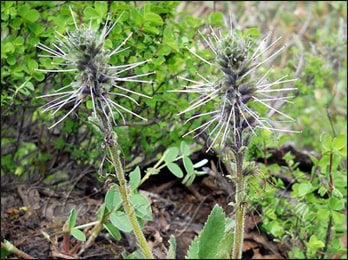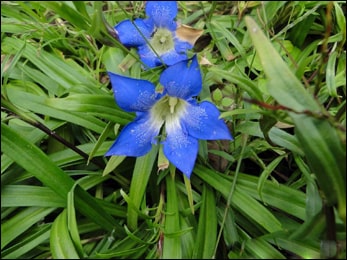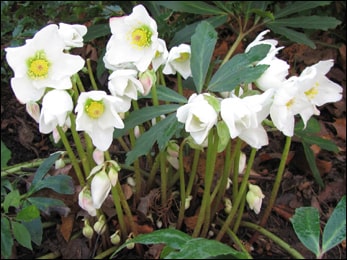Kutki (Picrorhiza kurroa) – Uses, Health Benefits, Dosage, Medicinal Properties

(Ref: Bhavaprakasa Nighantu)
Introduction
Kutki is the very amazing herb of Ayurveda that literally means bitter taste. Bitter roots of this powerful herb are used to treat various disorders. Being a very effective coolant Kutki is used to treat various bleeding disorders like nasal bleeds, menstrual problems etc.
It is called Behdhniya herb due to its piercing nature. It is used to treat fevers that are caused due to vitiated Pitta and Kapha dosha in the human body. Kutki is a very amazing liver stimulant and it helps to aid with serious skin disorders. It also used in the treatment of auto-immune disorders like psoriasis and vitiligo.
Plant Description
Kutki is a perennial herb that attains a maximum height of 25-30cm. Creeping stem of the plant is small, weak, leafy and slightly hairy. Radical and sharply serrated leaves of the plant are about 5-15cm long. Kutki contains small flowers that are pale or purplish blue in colour. 5 lobed flowers of the plant are about 8mm long. The beneficial rhizome of the plant is 15 to 25cm long and dark brownish in colour, are jointed, zigzag, cylindrical and irregularly curved. Fruits are two-celled small spherical capsules and contains multiple white coloured tiny seeds. Flowers and fruits are appear from June to August. The moist and cool climate is very beneficial for the growth of this plant. Dry seeds of the plant are collected from August to September.
Habitat
Kutki is basically native of India and it is also distributed in many regions of Asia. In India, it is widely distributed in Himalayan region from Kashmir to Sikkim and it is also found in Nepal.
Names
- Latin name – Picrorhiza kurroa
- English name – Picrorrhiza, yellow gentian
- Hindi name – Kutki, Katuka
- Sanskrit name – Katuki, Katurohini, Katvi, Arishta, Chakraangi
- Gujarati name – Kadu, Katu
- Bengali name – Katuki, Katki
- Punjabi name – Kaud, Karru
- Telugu name – Katukarohini
- Marathi name – Kali katuki
- Tamil name – Kadugurohini
- Malayalam name – Kadugurohini
- Oriya name – Katuki
- Kannada name – Katuka rohini
- Urdu name – Katuki
- Arabic name – Kaharabake
- Urdu name – Kharabake
According to bhavprakash nighantu

According to above mentioned verse of bhavprakash nighantu katavi, katuka, tikta, krishanbheda, katambhra, ashoka, matsyashakla, chakrangi, shakuladini, matsyapitta, kandruha, rohini and katurohini are the various synonyms of this herb. Its taste is bitter and after digestion, it is pungent in taste. This herb is light, dry and cool in potency. It helps to remove toxins and stimulate the process of digestion. This herb is very beneficial for treating diabetes, heart disorders, and respiratory diseases. It helps to remove blood impurities, and provide relief from a cough and heat of the body and also good for skin related problems.
Reference
The bhavprakash nighantu with elaborated Hindi commentary of Padama Shri Prof Krishna Chander chunnekar and edited by Dr. Gangasahay pandey: edition 2010; page number- 67 and verse number – 151 and 152.
Uses of Kutki (Picrorhiza kurroa)
- Root powder of this herb is strong laxative (virechak) in nature and help to cure chronic constipation (vivandh).
- Leaf paste of the herb is applied locally to relieve burning sensation (daha).
- The leaf paste also used to treat various skin related problems (charm roga).
- This herb is also an amazing remedy for treating chronic recurrent fevers (visham jwara).
Health Benefits of Kutki (Picrorhiza kurroa)
- Kamla – Kamla roga (jaundice) is yellow pigmentation of skin and this herb help to treat this disorder. This condition is due to an increase of bilirubin level in the bloodstream. This effective herb help to reduce the raised amount of bilirubin and also combat with this serious problem.
- Asarjit – Due to calming effects of this herb, it helps to treat bleeding disorders and it help to pacify vitiated pitta dosha in the body.
- Pandu – Bluish black pigmentation of skin and passage of blood with stool are two major symptoms of this disorder. According to Ayurveda, this herb helps to pacify doshas in our body and prevent body from the risk of this disorder.
- Yakrit vikara – It helps to prevent the liver from the risk of various infections and help to maintain the overall health of this vital organ of the body.
- Shwaas – It helps to pacify aggravated Kapha dosha in the body and give relief from congestion. It is a very effective herb for the sufferers of asthma. It is also used to aid with flu, common cold, and cough.
- Kupachan – It helps to stimulate digestive fire and aid with various problems associated with this system of body. It aid with indigestion, anorexia, flatus, blenching and bloating. It protects our abdomen and intestine from the harmful infections of bacteria.
- Hridya roga – It is also a very amazing remedy for heart-related disorders.
- Krimi vikara – Use of Kutki help to kill the harmful intestinal worms in children.
More Health benefits of Kutki (Picrorhiza kurroa)
- Stomachic nature of this herb help to promote the overall health of our digestive system and fight against various problems like ascites, abdominal distention, chronic constipation, and colic pain.
- Anti-inflammatory properties of this herb help to reduce both internal and external inflammation. It also good to reduce the stiffness of joints and relieve joint pain.
- It also helps to stimulate the immune system and give energy to body cells to fight against chronic fevers and infections caused by the invasion of micro-organisms in bloodstream.
- This herb has the potential to reduce the high level of glucose in blood and very effective remedy to fight against diabetes.
- It is a hepato-protective herb that helps to promote the overall health of the liver and protect this organ from the harmful actions of toxins and free radicals.
Classical Reference
Dosage of Kutki (Picrorhiza kurroa)
- Root powder – 500mg-1gm
- To treat recurrent fever – 5-6gm
Other Types of Kutki
1. Gentiana kurroo

This species is abundantly distributed in the various regions of India, Pakistan, and Nepal. In India, it is found in the northwest Himalayas and also grow in hilly areas of Himachal Pradesh and Kashmir. It is also found in Africa, Europe, New Zealand, and America.
Plant Description
It is small growing perennial shrub about 10-12cm in height. Leaves are radical and oblong-lanceolate. The Plant contains solitary and funnel-shaped flowers with long spikes that are blue in colour with white dots. Fruits contain numerous tiny seeds.
Names
- Latin name – Gentiana kurro
- English name – Indian gentian, Himalayan gentian
- Hindi name – Chireta, kadu, karu, kore kutki
- Sanskrit name – Girija, anuja
- Punjabi name – Kamal phool, neelkanth
- Kannada name – Kiriyatu
- Tamil name – Nilavimbu
- Malayalam name- Kiriyat
- Urdu name – Neel kanthi
Uses of Gentiana kurroo
- This beneficial herb is a very effective remedy for treating fever.
- It works wonderfully to relieve colic pain in small children and also combat with severe abdominal pain and abdominal spasm in adults.
- It is very effective expectorant and it helps to treat cough cold and asthma.
- It is also used as the blood purifier and it helps to remove harmful toxins from the blood. It prevents our blood cells from the harmful risk of infections.
- Carminative nature of this herb helps to aid with chronic constipation.
- Anthelmintic properties of this herb help to kill harmful worms that cause serious problems in small children.
2. Helleborus niger

Helleborus niger is commonly called black hellebore, Christmas hellebore, and hellebore. It is an evergreen plant that grows up to height of 20-60cm. The plant contains lance- shaped leaves that are bluish to dark green in colour. The Flowering period of the plant is from November to February depending upon the variety and location of the plant. Flowers are white to light pinkish in colour. This plant is poisonous in nature.
The sap of this plant is poisonous in nature and it causes severe irritation, rashes, and eczema.
Names
- Latin name – Helleborus niger
- English name – Black hellebore, Christmas rose
- Hindi name – Khusrani kutki
- Gujarati name – Kadu
- Malayalam name – Kadu
- Arabic name – Khertik
- Iran name – Kherbeksiya
Uses of Helleborus niger
- The cold decoction prepared by this herb is used to clean wounds (varn prakshalan) and also used to reduce the pain of wounds.
- It is used to treat painful fevers (vednayukat jawara) and joint inflammation (sandhi shoth).
- Helleborus with punarnava, apamarg, chirayta and sonth are used to treat ascites.
Health Benefits of Helleborus niger
- This herb is very beneficial to aid with various heart-related disorders.
- It is also used to relieve excessive sweating, thirst and burning sensation caused by chronic fevers.
- It is analgesic in nature and used to reduce excessive pain in the body.
- It is also purgative in nature and good for the sufferers of constipation.
- It is also used to kill intestinal worms.
- It also helps to increase both the quantity and flow of menstrual blood. It is also used to relieve menstrual cramps.




